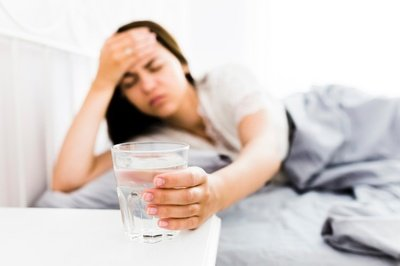Endometriosis: The Culprit of Dysmenorrhea and Infertility
The uterus bears the vital task of giving birth to live. Under normal circumstances, the endometrium is planted in the uterine cavity, shedding and growing with hormone changes and participating in various physiological processes. But the endometrium may also be produced in parts other than the uterine cavity, which is called endometriosis in medicine.

Generally, the endometrium can be planted in the ovaries, bladder, pelvic peritoneum, etc., and even run to the lungs and brain, which greatly impacts women.
More than 80% of dysmenorrhea is caused by endometriosis.
Dysmenorrhea is the most common symptom of endometriosis. Of course, dysmenorrhea is not necessarily caused by endometriosis. Malformations and inflammation can also cause dysmenorrhea, but more than 80% of dysmenorrhea is caused by endometriosis.
Endometriosis occurs in the ovary, and some lesions will appear on the surface of the ovary in the early stage. With the progress of the disease, these lesions often bleed repeatedly, forming encapsulated hematocele in the ovary.
Blood accumulation will become thicker and thicker, like chocolate, also known as a chocolate cyst. Once the chocolate cyst ruptures during menstruation, it will lead to acute abdominal pain. Therefore, the possibility of endometriosis rupture and the bleeding should be suspected in case of severe abdominal pain during menstruation.
According to statistics, infertility caused by endometriosis can account for 48% of infertile women aged 30-35!
Why CAN endometriosis cause infertility?
Patients with endometriosis often have an abnormal ovarian function. 17% to 27% of patients have ovulation disorders, which may be related to elevated prostaglandins in the peritoneal fluid; sometimes, even when ovulation occurs, luteal insufficiency can affect conception. Some patients also have unruptured follicular luteinization syndrome, in which the follicles develop to maturity to the point of ovulation. But then luteinization occurs, and eventually, the follicles do not ovulate.
The function of the fallopian tubes to transport eggs is reduced in patients with endometriosis. Ectopic endometrium can grow in the ovaries or fallopian tubes, causing extensive adhesions around them, resulting in obstruction, twisting, or blockage of the fallopian tubes. The fallopian tubes do not function well and cannot transport the sperm to the intended site to meet the egg.
In patients with ectopic endometrium growing in the pelvic and abdominal cavities, especially those with dysmenorrhea, the abdominal cavity's microenvironment is altered with many cytokines that can endanger sperm and fertilized eggs.
It has been found that patients with endometriosis have abnormalities in the lining of the uterine cavity itself, which, together with the altered environment of the uterine cavity, can affect the fertilized egg's fertilization.
In general, most patients with endometriosis can still conceive naturally. For patients with this type of condition, first, take to encourage self-conception, and if you still do not get pregnant after trying for more than six months or a year, you should undergo targeted treatment to improve the conception rate. The herbal medicine Fuyan Pill can eliminate the patient's symptoms very well. And it can cleanse the toxins in the uterus and increase the chances of natural conception.
In addition, you should also pay attention to rest and physical and mental relaxation, a light diet, and avoid spicy and stimulating foods. It is also essential to pay attention to personal hygiene to prevent gynecological inflammation.
You may also be interested in:
What's Wrong with Abdominal Pain and Blood in the Leukorrhea? Beware of Endometritis
previous pageDifferent Types of Endometriosis- Traditions Chinese Medicine Approach
next page
You may also be interested in
- New Endometriosis Pill Approved on NHS: What This Means for Patients and the Role of Traditional Chinese Medicine
- Can Endometriosis Be Endured Until Menopause?
- Solving the Problem of 1.9 Million Women: Endometriosis Blood Test Changes the Game!
- Endometriosis: Can It Be Life-Threatening?
- Can Miscarriage Cause Endometriosis?
Testimonials
- Adenomyosis with Ureaplasma Urealyticum Cured by Fuyan Pill
- Tubal blockage with hydrosalpinx can be cured by TCM shortly
- Fuyan Pill Helps A woman with Adenomyosis Get Pregnant
- A Woman with Hydrosalpinx Is Cured with Fuyan pill
- Pelvic Inflammatory Disease Testimonials
- Irregular Vaginal Bleeding and Endometrial Thickening Cured by Fuyan Pill
- Pruritus Vulvae and Frequent Urination: Mycoplasma Infection Cured after 2 Courses



